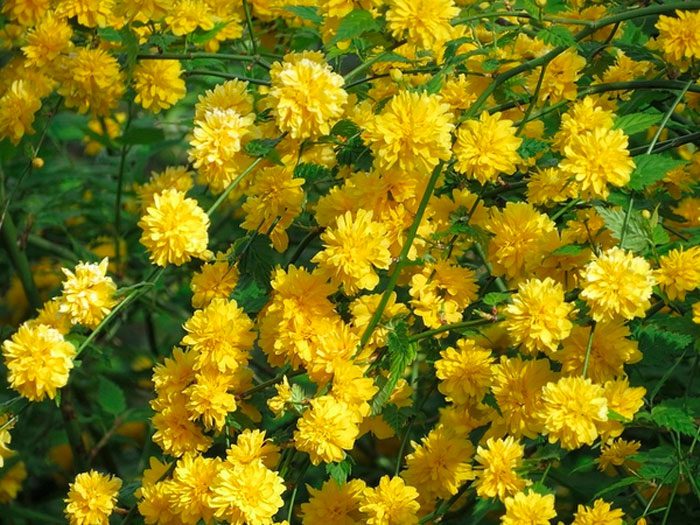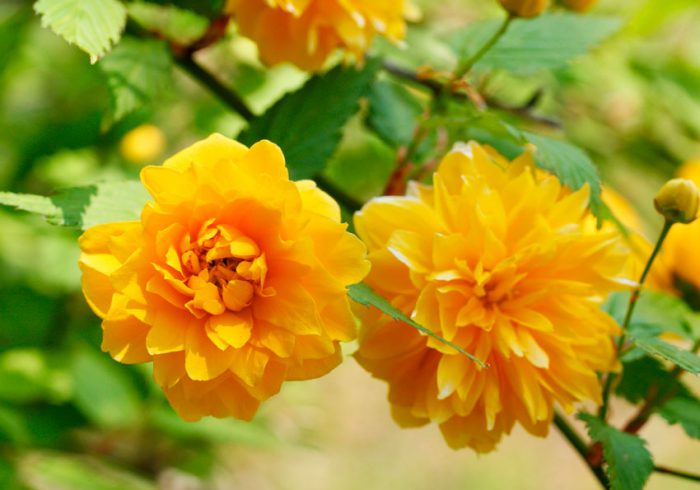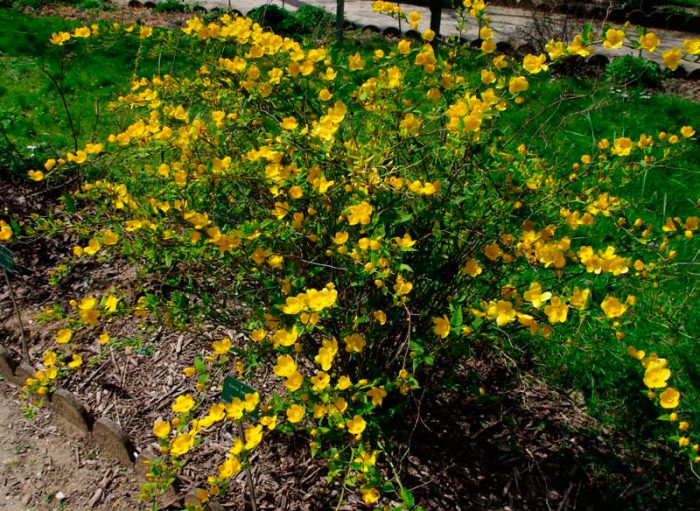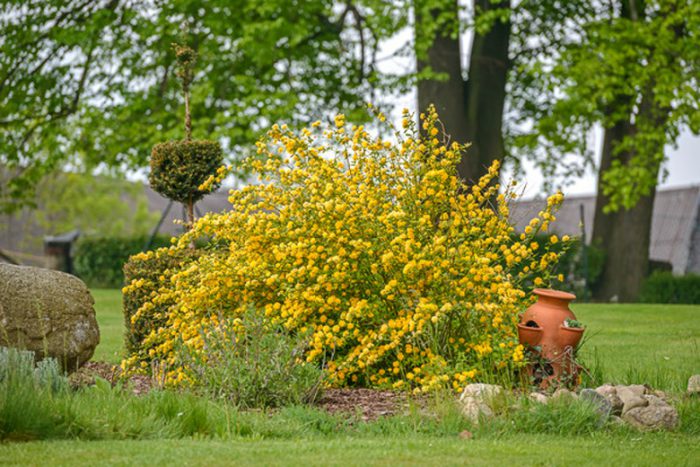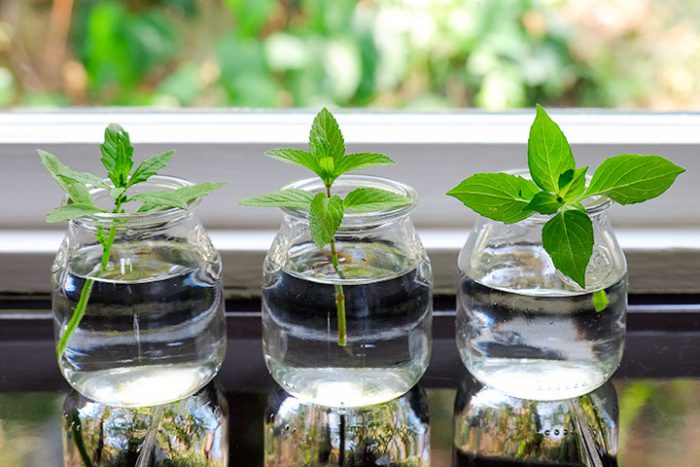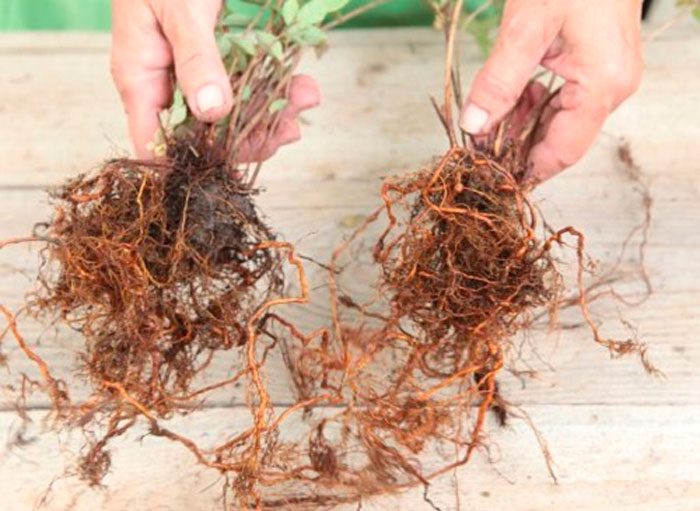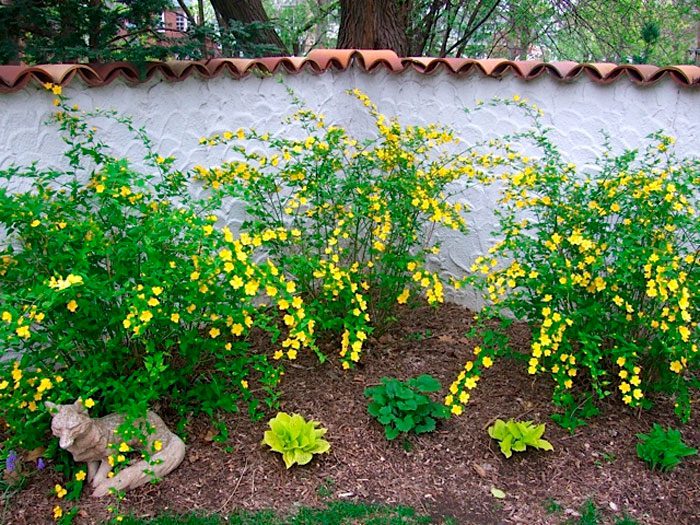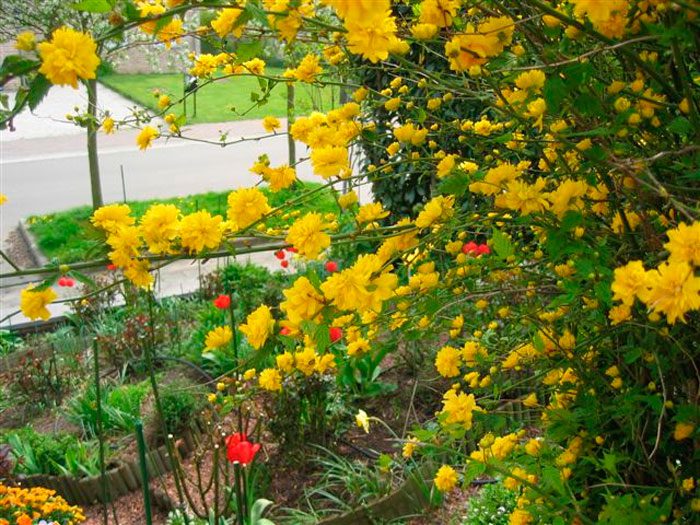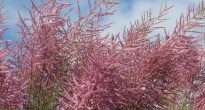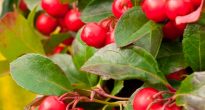A deciduous shrub, Kerria, or keria, is a member of the rose family. In nature, this plant can be found in southwestern China, as well as in the mountainous and forest regions of Japan. This shrub is named after the first gardener of the Royal Botanic Gardens in Ceylon, William Kerr, who was also a renowned collector of plants. In this genus, there is only one species - Japanese kerria. Such a plant has a spectacular flower shape, for which it is also called the "Easter rose".
Content
Kerria features
Kerria is a deciduous shrub, reaching a height of about 3 meters, it is distinguished by its rapid growth. The crown has a conical shape. Rod-shaped straight stems are colored green. The leaf plates of this shrub are similar to raspberry foliage. In length, they reach 10 centimeters, have a lanceolate shape, twice toothed, pointed to the tops. The front surface of the foliage is bare, and the back is pubescent. In the summer, it is painted in a pale green color, which changes to a rich yellow in autumn. Fragrant single flowers can be simple or double, they reach about 45 mm in diameter. The plant blooms from May to August, while the flowering duration is 3.5 weeks. Repeated flowering is often observed in autumn. The fruit is a juicy drupe of brown-black color, however, when grown in middle latitudes, no fruit is formed.
Strong gusts of wind can easily injure the fragile stems of kerria, so it is recommended to plant it surrounded by the following flowering shrubs: bubblegum, spiraea or Chinese tea. In spring, such a shrub will serve as a gorgeous backdrop for splayed blue phlox, blue aquilegia, purple dwarf irises. Buzulnik is often grown in the neighborhood of kerry, in harmony with this shrub during re-flowering in autumn.
Planting kerrias in open ground
What time to plant
It is recommended to plant kerrias in open soil in the spring before the sap flow begins, as well as in the fall 4–6 weeks before the start of frost. If the seedling has a closed root system, then it can be planted in open soil at any time, with the exception of the winter period.
The best place for planting such a shrub is a sunny place that has reliable protection from cold winds.It can also be grown in a shaded area, but this will negatively affect the abundance of flowering. But at the same time, under the scorching rays of the sun, the flowers burn out in a short time. In this regard, it is recommended to grow kerrias under large trees that discard lacy penumbra.
Landing features
Since this shrub is a forest plant, it needs moist soil saturated with nutrients and humus, and it is best if it is loamy. The size of the landing pit should be within 0.6x0.6 meters, and its depth should be 0.4 meters. Take a soil mixture consisting of humus, nutritious garden soil and sod land (3: 2: 3), mix with 60-80 grams of complete mineral fertilizer, and pour it on the bottom of the hole to make a slide. Then a seedling must be placed on this mound. After its roots are neatly straightened, the pit is filled with earth mixture (the composition is described above), which compresses a little. The planted shrub needs abundant watering. Make sure that the root collar of the seedling is flush with the surface of the plot.
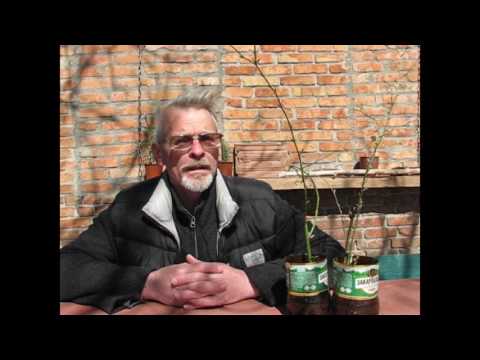

Watch this video on YouTube
Care for kerrias in the garden
If the bush is properly cared for, it will delight you with its most spectacular appearance. Kerria should be systematically watered, weeded, pruned and fed, and also do not forget to regularly loosen the surface of the trunk circle.
Watering is carried out only if necessary, when the topsoil is completely dry. When the plant is in bloom, as well as during the dry period, this shrub especially needs moisture. It should be watered with well-settled lukewarm water. In the event that a large amount of rain is observed in the summer, then kerria can do without watering, since it reacts negatively to stagnant water in the ground. After that, the bush will be watered or it will rain, it is necessary to loosen the top layer of the soil and pull out all the weeds.
For normal growth and development, the plant will require timely feeding. After the shrub has faded, it will need to be fed with mullein infusion (1:10) or with matured compost, into which wood ash is poured (from 100 to 200 grams of ash is taken per 1 square meter).
Transfer
This shrub easily tolerates a transplant, so you can transfer it to a new place almost at any time of the year, but not in winter or late autumn. However, it is best to replant kerria when there is no foliage on the bush, namely, in spring or in October. Dig in carefully around the perimeter of the crown, and then pull it out of the soil. Do not forget to prepare the planting hole in advance, it will be necessary to place the dug plant in it along with a lump of earth. Then do everything exactly the same as for the initial planting. For half a month from the moment of transplantation, the shrub will need systematic abundant watering, the root zone should be well saturated with water.
Reproduction of kerria
Such a plant can only be propagated by vegetative methods, namely: by layering, cuttings, dividing the bush, and also by shoots.
Cuttings
Green cuttings should be harvested in the middle of summer, and lignified ones - in April. Each cutting should have a pair of buds, and do not forget to make the bottom cut oblique. The cuttings should be planted in a cold greenhouse, placed in a small partial shade. Rooting of cuttings is almost always successful, but this process is quite long. In winter, the cuttings will stay in the same greenhouse. Next spring, in May, they will need to be planted in individual containers and grown in room conditions. After another 1 year, the cuttings can be planted in open soil in a permanent place.
Root offspring
To propagate the shrub by root suckers, it is necessary at the beginning of the autumn period to separate them from the parent plant and plant in a new place. The offspring have a developed fibrous root system, in this regard, if they are systematically watered and cared for properly, then the transplanted young kerrias will take root relatively quickly.
Layers
This shrub is fairly easy to propagate by layering. In the spring, before sap flow begins, select a developed stem and lay it in the prepared groove, the depth of which should be 7 centimeters. Lock the stem in this position. After 10-15 days, young shoots will grow from the buds. After their height is equal to 10-15 centimeters, it is necessary to fill up the groove, as well as the shoots themselves up to half the height, using nutrient soil for this. In the fall, these plants will grow their own roots, and they can be cut off and planted in a permanent place.
Dividing the bush
Often, when transplanting a shrub, it is divided. A dug out bush will need to clear the root system of soil, and then it is cut into several parts. It should be borne in mind that each of the parts must have developed roots and powerful stems. Planting the cut is done in the same way as the initial planting of seedlings. Planted plants need abundant watering.
Pruning
At the very beginning of the spring period, before the buds swell, sanitary pruning should be done. To do this, cut off all frost-damaged, injured and dried stems. The remaining young and healthy shoots should be shortened by ¼ part. As a result of such pruning, the bush will become more lush and compact, while the shrub will bloom even more abundantly.
When the plant fades, it will be necessary to cut the stems to the base, which are 4–5 years old. At the same time, young shoots are only slightly shortened, which will help the bush not lose its splendor.
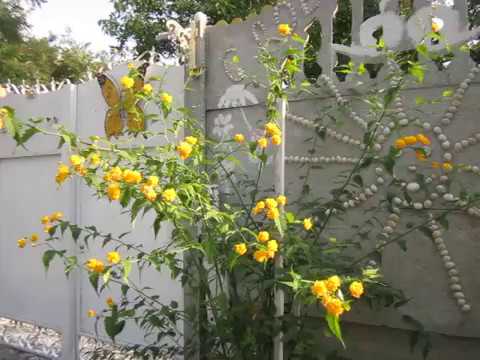

Watch this video on YouTube
Diseases and pests
Such a plant is highly resistant to diseases and pests. For many years of cultivation of kerria, there has never been a case of its defeat by a disease or pests.
After flowering
If the shrub is grown in a region with a warm climate, then it can survive the winter without shelter. When cultivating kerrias in mid-latitudes, where frosty and little snowy winters are often observed, it is better to cover it.
Growing in the suburbs
Planting Japanese kerrias in open soil, as well as caring for them when cultivated in mid-latitudes, should be the same as in warmer regions. But do not forget that when growing a shrub in the Moscow region or Leningrad region, he needs to provide a good shelter for the winter. The plant should be covered from the middle to the end of the autumn period, choosing a dry day for this. The stems must be bent to the surface of the soil, and lay them on a pre-laid foam. They should be fixed in this position, then they are covered with dried leaves or covered with spruce branches. A fixing frame should be made above the bush, which will prevent the branches from straightening. The shelter must be chosen so that it is well ventilated, otherwise the stems and branches under it will begin to rot.
With the onset of spring, you should choose a dry, but cloudy day and gradually remove the shelter. First you need to remove the frame, and then remove the foliage. Experienced gardeners advise that on a sunny day, protect the bush from the scorching direct rays of the sun with a covering material. The fact is that the stems can get severe burns, which can lead to the death of the shrub. Of course, the burnt stems can always be removed, however, after the appearance of young shoots, the splendor of the flowering is significantly reduced, and in some cases the kerria does not bloom at all.
Types and varieties
It was already mentioned above that this genus is represented by only 1 species - Japanese kerria. However, it has a large number of different garden forms:
- Albomarginata... This form is characterized by slow growth. Its asymmetrical leaf plates are surrounded by a white border along the edge, which gives the impression that the plant is very weak. This form is very popular with gardeners due to its variegation.
- Variegata (Picta)... The variegated bush can reach 1–1.2 m in diameter, and its height does not exceed 0.6 m. On the surface of the greenish-gray leaf plates there are white-cream spots. The color of simple flowers is yellow. This form is fast growing.
- Argenteo-marginata... The height of the shrub blooming with yellow flowers is about 200 centimeters. A thin strip runs along the edge of the sheet plates.
- Kerria albiflora... Simple small flowers are white.
- Kerria Japanese Aureovariyegata... In such a terry shape, the bud has a complex structure. The height of the bush is average, it blooms for a very long time. If you take care of the shrub correctly, then it will form flowers for 3 months.
- Kerria Golden Guinea... The bush is decorated with graceful leaf plates, as well as simple flowers, the diameter of which is 60 mm.
- Kerria Pleniflora... In spring, the bush is covered with a huge number of small double flowers that look like pompoms.

